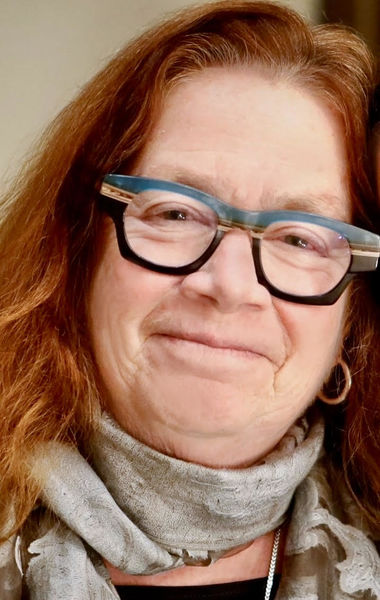Read an Excerpt from STRANGELY, FRIENDS, New Historical Nonfiction by Karen Dubinsky
In her latest work, historian and writer Karen Dubinsky uncovers a fascinating history that rarely makes the headlines. Strangely, Friends explores the personal and cultural connections that have tied Cubans and Canadians together from the early days of the Cuban Revolution to present day. With curiosity and care, Dubinsky turns her attention away from government negotiations and official policy to focus on the everyday people who built bridges across distances and differences.
The book traces the journeys of Canadians who found themselves drawn to Cuba—teachers, artists, development workers, filmmakers, and activists—whose presence left a lasting impact on the island. Just as importantly, Dubinsky shines a light on Cubans, especially musicians, who found community and recognition in Canada. Through these stories, she reveals a legacy of exchange that is as vibrant and surprising as it is enduring.
From Havana classrooms to Toronto jazz clubs, Strangely, Friends captures the texture of encounters that transcended ideology to highlight a shared humanity. Dubinsky’s intimate portraits and serendipitous moments bring to life the bonds forged through music, education, and mutual curiosity. In doing so, she offers readers a fresh and resonant perspective on the power of people-to-people connections, and the unexpected ways they shape history.
We're very happy to share an excerpt from this exceptions work on nonfiction, right here on Open Book!
An Excerpt from Strangely, Friends by Karen Dubinsky
Harry Tanner’s Legacy
Among the remarkable personalities I’ve encountered in this research, Harry Tanner stands out. I met Harry towards the end of his life, and he let me record hours of conversations. His life story was like hearing a radio serial. His life illustrates the meaninglessness and significance of national boundaries in human relations.
Harry Tanner was born to Charles and Dorothy Tanner in 1934 in Manzanillo, Cuba. His Canadian father worked for the Bank of Nova Scotia in Cuba. Harry’s mother was from Indiana. Manzanillo was, as Harry described it, a sugar plantation company town, “a place of misery and riches.” The labour force was a mix of Cubans and Spaniards. He remembered the grandeur of the mill owner’s house. “They made a fortune,” he recalled; “they were Spanish [said in a high mocking voice]. We were just [low voice] Canadians.”
The family moved to Havana in 1944 and enjoyed the comfortable life of the North American upper class of pre-revolutionary Cuba. “You could live here and not even know Cuba existed,” Harry later recalled. But even a foreign bankers son realized that these were dangerous times. “We all knew that Batista was a killer,” Harry recalled. Harry became politically involved. “Not much, because I was Canadian, not Cuban, and nobody took me seriously. But I felt the same things the Cubans were feeling. I saw the misery, the corruption, the oppression, the bodies on the street.” Decades later, Harry asked himself why he’d stayed after the revolution. “Why was I sympathetic to the revolution when others weren’t?” He evoked these memories of pre-revolutionary Havana, and concluded, “Perhaps I stayed because I knew things my father never wanted to know.”
On New Year’s Day, 1959, Harry watched President Batista’s plane depart. A week later, he leaned over the balcony of his girlfriend’s apartment and photographed the revolutionaries rolling into Havana. Everything changed, in Cuba as in Harry’s life.
As revolutionary Cuba occupied itself creating art schools, literacy campaigns, and film institutes, Harry started frequenting the newly opened offices of the Instituto Cubano del Arte e Indústria Cinematográficos, (ICAIC). One of Harry’s jobs was to source cameras, dollies, lights, and animation tables, helping to establish the first ICAIC studio.
Your CanLit News
Subscribe to Open Book’s newsletter to get local book events, literary content, writing tips, and more in your inbox
Harry’s own film output was prodigious. From 1959 to 1970—when he pursued another career in painting—Harry worked on seventeen documentaries and six feature films. He worked with many of the most important filmmakers from the creative cauldron that was ICAIC in the 1960s. He was also thrilled to work with Soviet filmmaker Mikhail Kalatozov, becoming, in his words, “assistant to the assistant to the assistant,” when Kalatozov came to Cuba to film the legendary Soy Cuba in 1963.
Harry also made films about a comic character, Pepe Trinchera (Pepe Trench). Pepe was a cartoon that illustrated a serious issue, the Cuban government’s call for trench building as a form of civil defence. This was basically a Cuban version of the “duck and cover” films in 1950s North America, with the enemies reversed. Instead of the Russians, Cubans worried about the Americans. Harry worked on this alongside Australian Harry Reade and famed Cuban animator Juan Padrón. For all the discord that Harry Tanner experienced as a First World foreigner in a revolutionary state film institution, it bears noting that two foreigners made a Cuban civil defence film.
Harry lived his first fifty years in Cuba and the last thirty in Canada and was culturally fluent in both countries. Yet at times, neither country knew exactly what to make of him. During the last interview I had with him before his death in 2019, I told Harry that I was going present his story at a conference at Humber College. He said, “Great, maybe you all can figure out whether I’m Cuban or Canadian.”
The banker’s son who grew up in Cuba because of the expansion of Canadian finance capital in the Caribbean. The young man who came of age during the Cuban Revolution that politicized a generation of young rebels, everywhere. He embodied Cuban and Canadian histories but above all, Harry was an artist who lived a rich artistic life—in two art forms, no less—in Havana at the centre a vibrant cultural and political moment.
____________________________________
Karen Dubinsky is a historian at Queen’s University. Between 2008 and 2023, she co-taught and coordinated a university exchange program on Cuban culture which brought Canadian students to the University of Havana and Cuban artists and academics to Canada. She is co-host of Cuban Serenade, a podcast about Cuban musicians in Canada and hosts the CFRC radio program Cuban Sounds in Canada. Her previous books include studies of transnational adoption, Canadian cultural history, and Canadian-Global South relations. She lives in Kingston, Ontario.






